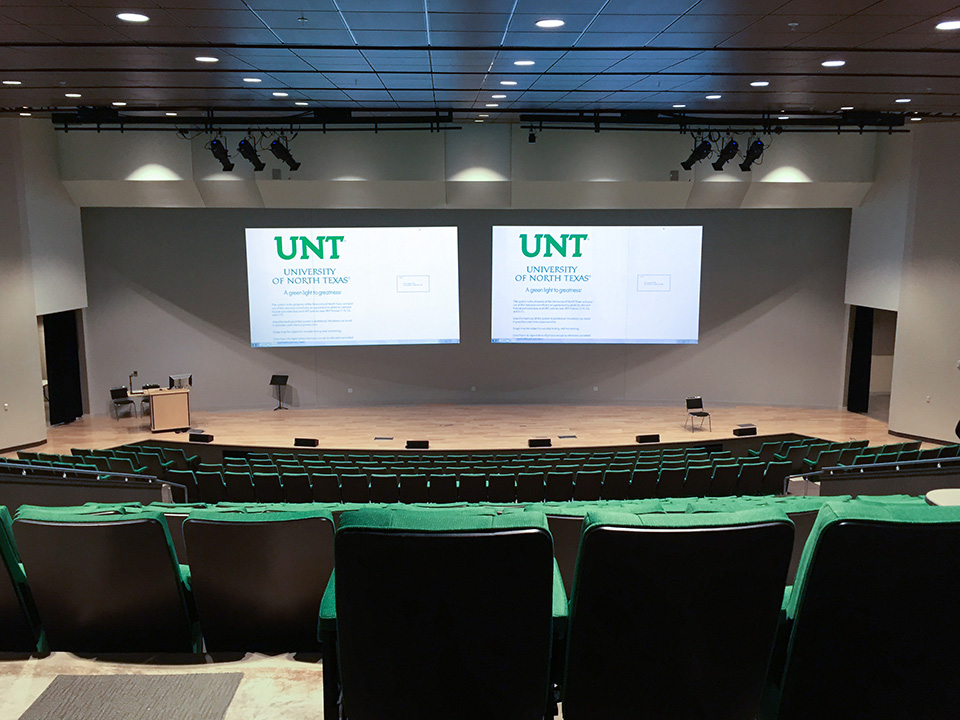Collaborative Learning & Active Workspaces (CLAW)
A Tiering System for the Modern Classroom
Studies have shown higher learner engagement can be achieved through active learning
and collaboration. This system is designed to ensure there are opportunities for experiential
learning across all classroom types.

CLAW Tier 0
Lecture
Passively inhibits or prevents collaboration and group work. Usually has fixed desks and chairs or fixed-row, stadium-style seating with tiered floors. Primary purpose is lecture-style instruction. Few or no writing surfaces available.
Tier 0 Activity Examples
- Designing/Planning - Planning a process
- Listening/Processing - Listening to an instructor lecture on a topic or talk through a problem.
- Observing - Watching an instructor solve a problem on a board or observing a dance routine.
- Presenting - Public Speaking
- Reading/Studying - Receiving text-based information. Reading a book, article, procedures, or peer writing.
- Reflecting -Thinking about how one’s personality might influence group dynamics; writing or talking about how your background impacted your choice of college major.
- Writing - Analyzing, transcribing, or transforming information through writing. Writing a paper, essay, or report, taking lecture notes.

CLAW Tier 1
Enhanced Lecture
Movable/rotating seating with fixed desks, conducive to small group discussion. Multiple writing surfaces for students to share if needed. Primary function is still lecture, but fosters quick group conversation when needed.
Tier 1 Activity Examples
- Creating/Constructing - Applying knowledge/skills- to create a product-Sewing a garment, making a model.
- Designing/Planning - Planning a process, Jigsaw
- Discussing - Dialoguing in-person or digitally with one or more people.
- Think/pair/share - small group discussion about the meaning of a reading; practicing speaking in a language class.
- Observing - Receiving visual information. Watching a video of children playing, observing a dance routine
- Problem-solving
- Writing

CLAW Tier 2
Flexible Lecture
Easily movable desks and chairs facilitate a reconfigurable room. Multiple writing surfaces on multiple walls. Primary uses place equal weight on both lecture and group work.
Tier 2 Activity Examples
- Writing - Analyzing, transcribing, or transforming information through writing.
- Reflecting - on intentional questioning od assumptions or beliefs.
- Listening/processing - Listening and talking through a problem
- Discussing - small group discussion, think/pair/share.
- Designing/Planning - Planning a process through.

CLAW Tier 3
Active Learning
Collaborative technology built into room infrastructure. Enables SCALE-UP pedogagy (or "flipped" classroom). Primary focus is on group work but lecturing is still a valid method of instruction. May not necessarily have movable desks due to technology restraints.
Tier 3 Activity Examples
- Think/pair/share; small group discussion about the meaning of a reading; practicing speaking in a language class.
- Listening to an instructor lecture on atopic or talk through a problem.
- Watching an instructor solve a problem on a board; watching a video of children playing; observing a dance routine.
- Music or dance performance; acting out a play; public speaking, performing a procedure.
Request to teach in a CLAW 3 classroom

CLAW Tier 4
Hands-On Laboratory
Traditional STEAM (Science, Technology, Engineering, Arts, & Mathematics) laboratories. Includes wet labs (Chemistry, Physics, Anatomy & Physiology, Chemical/Bio Engineering, etc.) and dry labs (Physics, Electrical/Mech. Engineering, Art, Music, etc.). Usually department owned, funded, and operated. Primary purpose is a highly specialized learning environment focusing on hands-on learning, not lecture or group work.
Tier 4 Activity Examples
- Designing/Planning - Designing an experiment, architectural structure, or prosthetic limb.
- Creating/Constructing - making a model of a virus; sewing a garment; painting a picture.
- Problem-solving - combining reactants in a chemistry lab; searching for information online; conducting qualitative interviews; diagnosing medical issues.
- Observation - Watching an instructor solve a problem on a board; watching a video of children playing; observing a dance routine.
- Writing - Drawing a table on a white board; writing out the solution to a math problem; writing a paper, essay, or report, taking lecture notes.

CLAW Tier 5
Immersive Technology
Experimental, immersive technology - AR, VR, "inside the content" type technology to offset high-cost or high-risk hands-on educational activities (e.g. Biology, Chemistry, Medicine, etc.). Mixed-reality technology. Experimental tech to enhance active learning, not necessarily collaboration. Usually department owned, funded, and operated. Primary purpose is a highly specialized learning environment focusing on hands-on learning, not lecture or group work.